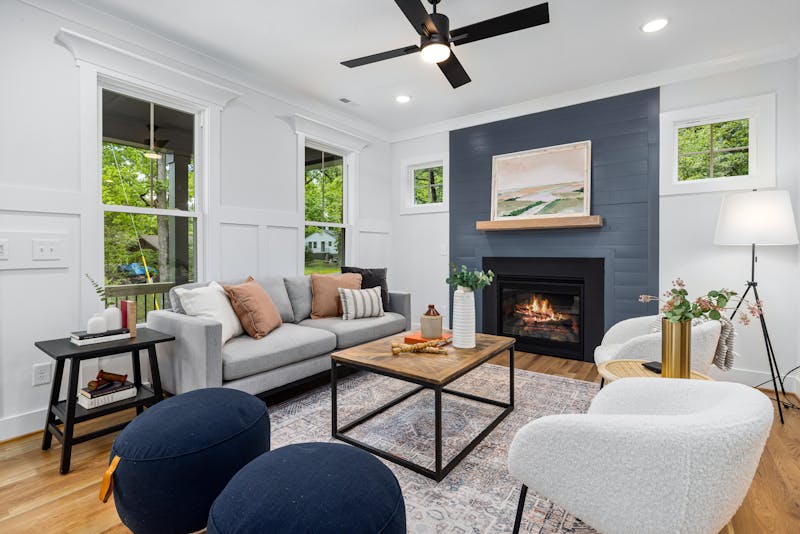How to Master Home Temperature Without Maxing Out Energy Use
In an era of rising energy costs and increasing climate concerns, mastering home temperature control has become both a financial necessity and an environmental responsibility. The challenge lies in maintaining comfort without watching utility bills soar—a balancing act that requires strategy, awareness, and sometimes a bit of investment. Fortunately, advances in technology and a deeper understanding of thermal dynamics have created numerous opportunities for homeowners to optimize their living environment while minimizing energy consumption.

Understanding how your home gains and loses heat is the foundation of efficient temperature management. Homes experience heat transfer through conduction (direct transfer through materials), convection (movement of air), and radiation (heat waves moving through space). In winter, heat escapes through poorly insulated walls, drafty windows, and gaps around doors. During summer, solar radiation through windows and heat-generating appliances can quickly overwhelm cooling systems. By addressing these fundamental principles, homeowners can make informed decisions about temperature control strategies.
The envelope of your home—its outer shell consisting of walls, roof, windows, and doors—is your first line of defense against temperature extremes. Proper insulation is perhaps the most cost-effective temperature control investment you can make. Modern insulation materials like spray foam can seal gaps while providing exceptional R-values (resistance to heat flow). Even in older homes, adding insulation to attics, walls, and crawl spaces can dramatically reduce heating and cooling needs. For a typical home, proper insulation can save 15-20% on heating and cooling costs—an investment that often pays for itself within a few years.
Windows represent a significant weak point in most home envelopes. Single-pane windows can lose up to ten times more heat than an equivalent area of insulated wall. Upgrading to double or triple-pane windows with low-emissivity coatings can substantially reduce heat transfer. However, if replacement isn’t in your budget, window films that reject heat while allowing light through can be an effective intermediate solution. Similarly, thermal curtains and cellular shades provide additional insulation layers when closed, particularly during extreme temperature periods.
Strategic ventilation offers a surprisingly effective way to manage home temperature with minimal energy use. During summer evenings when outside temperatures drop below indoor levels, opening windows strategically to create cross-ventilation can flush accumulated heat from your home. For example, a Hunter Fan positioned near a window can enhance this effect by drawing cool evening air through the house, potentially eliminating the need for air conditioning on mild nights. This technique, sometimes called the “night flush,” has been used for centuries before mechanical cooling existed.
Modern heating and cooling systems have come a long way in efficiency, but they still consume significant energy when running continuously. Programmable and smart thermostats represent one of the simplest ways to optimize system operation. By automatically adjusting temperatures based on occupancy patterns—lowering heat when you’re sleeping or away, for instance—these devices can reduce heating and cooling energy use by 10-15% without sacrificing comfort. More advanced models learn your preferences and can adjust based on weather forecasts or even local energy pricing during demand-response events.
Zoning systems take this concept further by dividing your home into separately controlled areas. This approach recognizes that not all spaces need the same level of conditioning at all times. Why cool bedrooms during the day when no one is using them? Why heat a rarely used formal dining room to the same temperature as your living space? Zoning can be implemented through dedicated HVAC zones with separate thermostats or through smart vents that regulate airflow to different rooms.
Ceiling fans remain one of the most underappreciated tools for temperature management. By creating air movement, they can make occupants feel up to 4°F cooler through the wind-chill effect on skin, allowing you to set your thermostat higher in summer without sacrificing comfort. Equally important but less known is their winter function—by running in reverse (clockwise) at low speed, ceiling fans gently push warm air that has risen to the ceiling back down into the living space, improving heating efficiency.
Heat pumps have revolutionized home temperature control by moving heat rather than generating it. Modern air-source heat pumps can extract heat from outdoor air even when temperatures drop well below freezing, and ground-source (geothermal) systems tap into the earth’s constant temperature to provide remarkably efficient heating and cooling. Though installation costs are higher than conventional systems, operating costs can be 30-60% lower, making them increasingly popular as technology improves and energy costs rise.
The microclimates within your home also deserve attention. Large windows facing south or west can create sun-drenched spaces that become uncomfortably warm even when the rest of the house is comfortable. Strategic placement of shade trees, awnings, or solar screens can prevent this solar gain in summer while allowing beneficial warmth in winter. Similarly, large appliances like ovens and dryers generate significant heat—running them during cooler evening hours in summer can prevent additional cooling demands.
Smart home technology has opened new frontiers in temperature management. Systems that integrate weather forecasts, occupancy sensors, and learning algorithms can make micro-adjustments to optimize comfort while minimizing energy use. Some can even account for the thermal mass of your home—how quickly it heats up or cools down—to time system operation for maximum efficiency. When connected to renewable energy systems like solar panels, these systems can shift energy-intensive heating or cooling to times when clean energy is abundant.
Behavioral adaptations represent the zero-cost approach to temperature management. Wearing appropriate clothing for the season—a light sweater indoors during winter or breathable fabrics in summer—can expand your comfort zone without adjusting the thermostat. Drinking warm beverages in winter and cold ones in summer helps regulate your body’s internal temperature. Even the strategic use of cooking methods (outdoor grilling in summer, oven use in winter) can contribute to a more comfortable home environment.
The psychological aspect of thermal comfort shouldn’t be overlooked. Studies show that people feel more comfortable when they have control over their environment, even if the actual temperature doesn’t change. Providing accessible fan controls, adjustable vents, or personal space heaters can increase perceived comfort without conditioning entire spaces to strict temperature standards.
As we face the dual challenges of climate change and energy security, mastering home temperature control has never been more relevant. The good news is that the solutions discussed here—from improved insulation to smart technology—typically pay for themselves through energy savings while increasing comfort and reducing environmental impact. By taking a holistic approach that combines building improvements, efficient systems, and informed behaviors, homeowners can create environments that remain comfortable year-round without excessive energy consumption.
The ideal temperature-controlled home isn’t one that maintains a rigid 72 degrees regardless of conditions—it’s one that adapts intelligently to both external conditions and occupant needs, using the minimum energy necessary to create comfortable living spaces. With thoughtful planning and strategic investments, this ideal is within reach for most homeowners, benefiting both personal finances and the planet.



